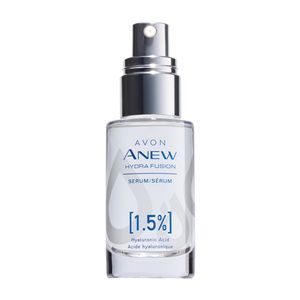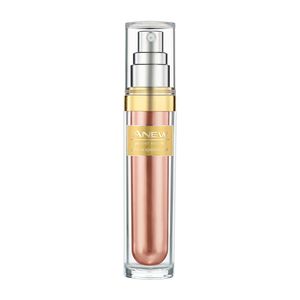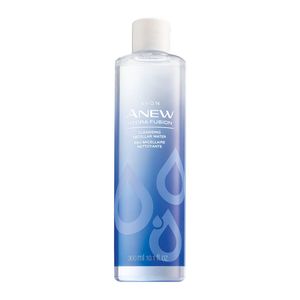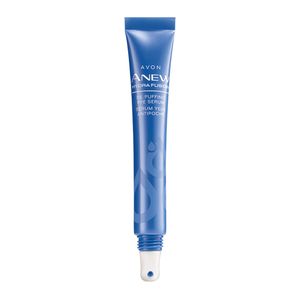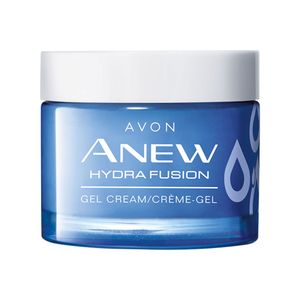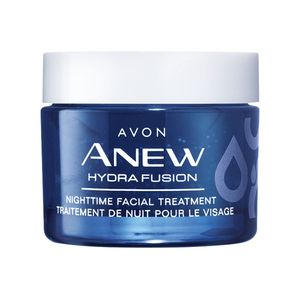- Shopping BagItems

When skin is hydrated, it appears firmer, plumper and has a luminous glow. But the ability for skin to hold so much moisture is the key. Enter hyaluronic acid – a skin care ingredient must-have that’s sweeping the beauty industry.
And for good reason.
Hyaluronic acid is a super hydrator that can hold up to 1,000 times its own weight in water. As we age, our body’s natural production of hyaluronic acid slows down. It’s no wonder then that hyaluronic acid has become a key ingredient in gels and serums across beauty brands.
So here’s everything you need to know about this super ingredient and how you can, and should, be adding it to your skin care regimen.
What is Hyaluronic Acid?
Hyaluronic acid is mainly found in the connective tissues and fluids of the body, with the highest concentrations in the skin. Some dietary sources of both animal and plant origin are also rich in hyaluronic acid. Hyaluronic acid has numerous functions in the body including increasing the moisture content of the skin, protecting the skin against environmental factors, and promoting healing. The substance can be isolated from its sources through chemical processes to obtain hyaluronic acid for commercial use. In cosmetics, hyaluronic acid is used in the manufacture of several skin care products in its pure form or as a salt derivative of sodium hyaluronate. The products exist in different formulations including injections, creams, gels, powders, and supplements, and are effective in increasing skin moisture, and diminishing fine lines and wrinkles. Therefore, the cosmetics are most commonly used for the treatment of age-related changes, general skin care, and wound care. Most of the products are suitable for all types of skin including dry, oily, and normal skin. Hyaluronic acid-based products are considered safe with no toxic effects. They also lack significant side effects except for the few that might occur in isolated cases, such as irritation, tingling, and bruising. Avon is one of the world’s best-known cosmetics companies, and offer many different types of cosmetic products containing hyaluronic acid.
The Discovery and History of Hyaluronic Acid
The discovery of hyaluronic acid dates back to 1934, when two researchers, Karl Meyer and John Palmer, isolated an unknown molecule from the vitreous body of a cow’s eyes (1). Further investigation revealed that the substance contained uronic acid and another sugar molecule. The researchers later named the substance hyaluronic acid, a term derived from a Greek word “hyalos”, meaning glass, plus uronic acid (1). Although the compound was isolated in acid form, it demonstrated salt-like characteristics when put under physiological conditions. The salt formed was called sodium hyaluronate, a neutralized form of hyaluronic acid. The chemical structure and use of hyaluronan remained unknown until in the 1950s when Karl Meyer and his colleagues first established its chemical structure (1). Surprisingly, Endre Balazs had first used this compound commercially as an egg-white substitute in a bakery in 1942 after applying for a patent.
Ever since, hyaluronic acid has been widely investigated and in the late 1950s it was first used in the medical field to replace vitreous in human eye surgery. The hyaluronan was initially obtained from the human umbilical cord, but later from rooster combs, which contain the largest content of hyaluronic acid as a highly purified and high molecular weight substance (1,2). Balazs named hyaluronic acid as hyaluronan in 1986 to ensure conformance to the polysaccharides international nomenclature1. The name was used to denote the various forms of hyaluronic acid including the acid form (hyaluronic acid) and hyaluronate salts (sodium and potassium). With time, hyaluronic acid has been extensively studied, leading to its isolation from several sources as we’ll discuss below. Moreover, its properties, ranging from physical to biological roles as well as applications of hyaluronic acid, have been of interest to many researchers leading to a better understanding of the molecule.
The History of Hyaluronic Acid in the Beauty Industry
The use of cosmetics or personal care products is not a new practice by any means – in fact, it was common among the ancient Greeks, Egyptians, and Romans. Cosmetics formed a critical part of these cultures, ranging from promoting personal beauty to the preservation of dead bodies. Moreover, ointment derived from the fenugreek plant was used to prevent the formation of wrinkles on the face. These ancient cultures were interested in more than just the practical use of cosmetics - books for the systematic preparation of cosmetics using distillation and extraction processes were also written by Theophrastus of Greek (372 B.C.) and Galen of Roman (130 – 120 AD). With time, the awareness of cosmetics in Europe increased through advocators and early explorers including the Portuguese and Spanish. Cosmetics were mainly used at the precincts of the royal courts during the Renaissance period all the way until 1900, when it became possible for ‘ordinary’ people to own their own cosmetics.
Similarly, various products of hyaluronic acid have been used in the beauty industry for a long time. The first hyaluronic-based dermal filler to improve facial wrinkles was developed in 1989 after Balazs established that it was compatible with the body and lacked immunogenicity (12). The discovery coincides with the time that Vandamme and Soetaert (16) noted that the general population started using cosmetics. On November 21, 2003, two dermal filler products of hyaluronic acid were recommended for approval for the “correction of soft tissue contour deficiencies” for the first time by Food and Drug Administration (FDA) of the United States. Three weeks later, on December 12, 2003, the injectable Restylane gel was approved for the treatment of wrinkles on the face (12). Other hyaluronic acid products including Hylaform and Juvederm were later approved in 2004 and 2006 respectively. Ever since, several hyaluronic acid-based products have been approved for use in the cosmetic industry.
Skin
Hyaluronic acid helps in improving skin structure and functions of both dry and oily skin. Many cosmetics for skin contain hyaluronic acid and its derivative salts of sodium and potassium hyaluronate, which act as agents of skin conditioning and are used in a concentration of up to 2% (1). A review in 2014 established that ingested hyaluronic acid significantly improved the moisture content of dry skin and improved treatment outcomes in patients with dry skin problems that result in improved quality of life. It has also been observed that dietary hyaluronic acid has significant clinical effects on the dry and rough skin, with ingestion of 120 mg of hyaluronic acid supplement per day resulting in increased skin moisture content.
Whereas dry skin can be caused by several factors such as genetics, age also contributes to dry skin that can be managed by hyaluronic acid. Aging is linked with progressive reduction of hyaluronic acid in the skin, which is associated with a reduction in moisture due to dehydration, skin atrophy, and decreased elasticity (13). Therefore, hyaluronic acid can be used to restore moisture in aging skin. Skin conditions such as diabetic foot lesions and venous leg ulcers have also been found to be improved by the use of hyaluronic acid due to its wound healing properties.
Face
Hyaluronic acid can also be used to improve facial wrinkles. Increasing lines and wrinkles accompanied by increased vasculature and alterations of the face are among the clinical signs of the aging face (11). However, there are many therapy modalities ranging from skin care products to energy-based treatments. Hyaluronic acid fillers have been a critical intervention for correcting facial changes that occur due to aging and other pathological conditions.
Hyaluronic acid achieves its anti-wrinkle effects through a dual mechanism involving attracting and binding to water molecules after incorporation into dermal tissue which results in the sustenance of augmentation (11). It is these moisturizing and high water retention capacities of hyaluronic acid that make it a useful product for maintaining skin condition and function.
Hyaluronic acid is also considered as a new treatment approach for acne. Acne is a common problem affecting individuals aged 11 – 30 years with the occurrence of scarring to some extent. It is a localized inflammatory condition in various parts of the body including the face, chest, back, and upper arms. There are three categories of acne scars including atrophic, hypertrophic and keloidal, but the atrophic subtypes (boxcar scars, rolling scars, and icepick scars) are the main consideration to dermatologists. The rolling atrophic acne scars that can be reduced when stretched are the most common types of acne scars and the target of treatment with hyaluronic acid.
Benefits of Hyaluronic Acid in Cosmetics
Hyaluronic acid is used not only as skin-conditioning agent, but also to increase viscosity of cosmetic solutions (7). It is used in cosmetics up to a concentration of 1%. In skin preparations, hyaluronic acid is mainly used as an anti-aging agent, either as a low molecular weight or high molecular weight substance with the former tending to increase the moisture content of damaged skin as well as facilitating its repair (7). Conversely, when applied on the skin surface, the solutions of high molecular weight hyaluronic acid form a hydrated viscoelastic film that is air permeable. Thus, the film does not affect cutaneous respiration as it restores skin moisture on the surface.
Hyaluronic Acid Products
There are several products containing hyaluronic acid available in the market. These compounds come in different forms, ranging from injections to creams. Avon is one of the best selling beauty companies for hyaluronic products and other cosmetics, fragrance, skin care, and personal care products. This section reviews hyaluronic acid-based products while highlighting the individual products currently offered for sale by Avon.
Serums
Hyaluronic acid serum can come as a pure product of hyaluronic acid or a multicomponent with other active ingredients, such as tocopherol, used for skin care. Serums have been demonstrated to significantly boost skin moisture regardless of the type of skin. With hyaluronic acid’s ability to hold moisture up to 1000 times its weight, serums made of 100% hyaluronic acid are the ideal products for the skin, as their chemical composition imitates the effects of natural hyaluronic acid in the skin. Moreover, serums usually have the highest hyaluronic acid levels, thus giving the most benefit from them. In particular, hyaluronic acid serums are useful for dry and mature skin or for plumping fine lines and wrinkles. Some of the hyaluronic acid-based serum products sold by Avon are Anew Power Serum, Anew Hydra Fusion Replenishing Serum, Anew Clinical Resurfacing Expert Smoothing Fluid, and Anew Clinical Unlimited Lashes Lash & Brow Activating Serum.
Anew Power Serum
One of the active ingredients of Anew Power Serum is sodium hyaluronate. It improves skin appearance by detecting and repairing damaged skin. In addition to hydrating the skin, the serum has a smoothing effect on rough skin and wrinkles giving the face a firm look. Anew Power Serum is therefore used as an ideal routine skin care product for anti-aging and to firm and smooth the face. It is typically used to complement the routine skin care and followed up with moisturizers. Therefore, the serum is applied on a clean and dry skin, followed by the preferred moisturizer after it is absorbed. It is recommended for use twice daily, preferably in the morning and evening. There are several benefits associated with Anew Power Serum:
• It employs Advance Boost Technology that helps reduce fine lines and wrinkles and increase the natural radiance of the skin. The serum is allergy tested, hypoallergenic and alcohol-free, making it suitable for sensitive skin. It has been proved to be effective for skin use by dermatologists and does not cause comedones associated with. It also has non-staining properties and does not contain any oil component.
• Compared with other hyaluronic acid serum products in the market, Anew Power Serum has several advantages including dramatic improvement of the overall appearance of the skin and better hydrating, firming, and smoothing effects when complemented with moisturizers. It has also been shown to maximize the performance of several anti-aging regimens currently used.
• Lastly, Anew Power Serum delivers a high concentration of the active ingredients, but its lightness makes it deal for use with other products such as creams.
Anew Hydra Fusion 1.5% Hyaluronic Acid Serum
Meet our highest concentration of moisture-boosting hyaluronic acid (1.5%!) for visibly plumper, bouncier skin. Hyaluronic acid is naturally found in skin but diminishes over time. It enhances skin's ability to retain moisture. Our serum has 1.5% pure hyaluronic acid, our highest concentration, which acts like a sponge holding up to 1,000 times its weight in water for lasting hydration. Formulated with raspberry antioxidant, known to help boost skin repair and protect against environmental factors. Plus, it has three different molecular sizes of HA to reach multiple layers of skin's surface to visibly plump skin with 2x more moisture and bring back its bounce! Our 1.5% Hyaluronic Acid Serum is hypoallergenic, dermatologist-tested and suitable for every skin type.
Shop Anew Hydra Fusion 1.5% Hyaluronic Acid Serum »
Anew Clinical Unlimited Lashes Lash & Brow Activating Serum
Anew Clinical Unlimited Lashes Lash & Brow Activating Serum is a blending of peptides and botanicals with sodium hyaluronate playing a critical role in its function. The product is not used on skin, but on the upper lash line and brows to enhance their looks by making them look longer, fuller, and healthier after just eight weeks. However, it does not reverse or reduce hair loss, nor does it promote hair growth. It produces results observable as early as four weeks. For precise application, the serum comes with a brush that is extra thin. It has no parabens, sulfates, or phthalates and it is hypoallergenic, making it safe for use in sensitive skin. Anew Clinical Unlimited Lashes Lash & Brow Activating Serum is a once daily use product applied on a clean, dry skin at nighttime by sweeping a thin layer of serum along the lash line of upper eye lids only. The right amount of the serum is only one dip into the vial that is used for both upper eyelids. However, it can also be used on eyebrows. After application, the serum is left to dry on its own without rubbing the eyes.
Shop Anew Clinical Unlimited Lashes Lash & Brow Activating Serum »
Creams and Gels
Several creams and gels containing hyaluronic acid are also available in the market. These groups of cosmetic products are closely related with only slight differences. Both gels and creams are water-based semi-solids. However, gels are usually oil-free, transparent and more liquid. They are also mostly colorless, more quickly absorbed in the skin and easily disappear when applied. Conversely, creams contain some oil base and not transparent and are usually white as opposed to gels that can come in different colors. on eyebrows. After application, the serum is left to dry on its own without rubbing the eyes.
Avon also stocks various cosmetic products in gel and cream forms, with each having its advantages and disadvantages. Anew Hydra Fusion Gel Cream contains sodium hyaluronate as the hyaluronic acid component.
Anew Hydra Fusion Gel Cream
Anew Hydra Fusion Gel Cream has a dual role on the skin, including hydration and defense. It contains the super hydrator hyaluronic acid which holds more than 1,000 times its weight in water to infuse skin with deep and lasting hydration plus raspberry antioxidant, a potent ingredient to help defend skin from environmental stressors. It is a water-like gel that absorbs and locks in moisture, and doubles the skin moisture to produce an instant deep hydration lasting up to 72 hours. Thus, Anew Hydra Fusion Gel Cream is a lightweight product that results in a smooth, refreshed and plumped skin with hydration. Hydra Fusion Gel Cream is hypoallergenic and both dermatologist and allergy tested, making it an effective product for skin care in individuals with sensitive skin. Moreover, it is non-greasy and oil-free, making it easy to apply and to avoid staining.
Shop Anew Hydra Fusion Gel Cream »
Facial Masks
Despite existing for several years, the use of facial masks in cosmetic industry is becoming the new trend, coupled with the inclusion of innovative ingredients and functional groups with better efficacy. Facial masks are thin films applied on the face and allowed to dry quickly before the residues are peeled or rinsed off. Traditionally, masks were applied as thick layers without massage. However, some are massaged after application to aggregate for easy removal. Facial masks are mainly used for a fast and deep skin moisturization, replacement and constitution, absorption and elimination of sebum, and skin rejuvenation. An ideal facial mask should be homogenous and possess desirable rheological properties, as they are spread throughout the face using the fingers. An immediate radiant look of the face can be expected after removal. The application of facial masks over a face cream is a common aesthetic practice to produce an intense hydration of the skin that promotes penetration of active ingredients. However, when used together with face creams, they should be gently removed by wet wipes, as they stay longer on the skin. Facial masks are available in different formulations including gels, emulsions, and suspensions.
Moisturizers
Moisturizers are critical components of daily skin care, especially in conditions associated with reduced skin moisture and altered skin barrier. However, there is no single definition of a moisturizer as it is a term coined by marketers to promote its function in moistening the skin. Moisturizer can refer to a group of compounds encompassing emollients, occlusives, and humectants that can be used to increase skin moisture, reduce fine lines and smooth the skin. These substances have different compositions, ranging from oily to watery.
• Emollients are types of moisturizer that mainly consist of lipids and their components and enhance the hydration, softness, smoothness and flexibility of the skin.
• Occlusives are mainly oil based and help in maintaining the water content of the skin by creating a hydrophobic barrier on the skin surface that prevents water loss.
• Lastly, humectants are hygroscopic in nature and attract and retain water, thus helping the stratum corneum to absorb and retain water from both the dermis and humid environment through the epidermis.
Currently, several moisturizer-based cosmetic products are available in the market. Avon has unique moisturizers with hyaluronic acid that not only help to increase skin moisture, but also to give the skin a younger look.
Anew Hydra Fusion Nighttime Facial Treatment is used as a moisture replenisher to moisturize the face at night.
In addition to providing moisturizing effects, hyaluronic acid-based products can also promote wound healing. Even though most moisturizers are effective in increasing skin moisture content, their efficacy is largely dependent on a proper choice and compliance of use including the right time of application. An appropriate moisturizer should also combine emollients, humectants, and occlusives for enhanced skin water retention capacity.
Conclusion
Hyaluronic acid is a crucial substance not only in the beauty industry, but also in general medicine. It is a natural product occurring in animal joints, eyes and other body organs where it performs numerous biological functions. It has unique properties that contribute to its wide application in various areas such as eye procedures, dermal filler in plastic surgery, management of skin conditions, and wound healing. Hyaluronic acid can be isolated from its natural sources and modified for external use, particularly in cosmetics use where low molecular weight is desired. This compound is purified to make it free of contaminants such as residual proteins that may lead to allergic reactions when used in the body.
References
• Alam, M. and Dover, J.S., 2006. Treatment of acne scarring. Skin Therapy Letters, 11(10), pp.7-9.
• Alsaedy, S.J., Mosa, K.A. and Alshami, S.H., 2017. The Efficacy of Topical Hyaluronic Acid Serum in Acne Scar Patients Treated with Fractional CO2 Laser. American Journal of Dermatology and Venereology, 6(2), pp.17-24.
• American Society of Plastic Surgeons, 2017. 2017 Plastic Surgery Statistics Report. Available at: https://www.plasticsurgery.org/documents/News/Statistics/2017/plastic-surgery-statistics-full-report-2017.pdf (accessed 20 August 2018).
• Avon, n.d. About Avon. Available at: https://about.avon.com/us-about/company/about (accessed 20 August 2018).
• Becker, L.C., Bergfeld, W.F., Belsito, D.V., Klaassen, C.D., Marks, J.G., Shank, R.C., Slaga, T.J., Snyder, P.W., Cosmetic Ingredient Review Expert Panel and Andersen, F.A., 2009. Final report of the safety assessment of hyaluronic acid, potassium hyaluronate, and sodium hyaluronate. International Journal of Toxicology, 28(4_suppl), pp.5-67.
• Bowman, S., Awad, M.E., Hamrick, M.W., Hunter, M. and Fulzele, S., 2018. Recent advances in hyaluronic acid based therapy for osteoarthritis. Clinical and Translational Medicine, 7(1), p.6.
• Burdick, J.A. and Prestwich, G.D., 2011. Hyaluronic acid hydrogels for biomedical applications. Advanced Materials, 23(12), pp.H41-H56.
• Fallacara, A., Baldini, E., Manfredini, S. and Vertuani, S., 2018. Hyaluronic Acid in the Third Millennium. Polymers (20734360), 10(7).
• Figus, A., Wormad, J CR., Wade, R., G., and Bistoni, G., 2015. Chapter 5: Hyaluronic Acid for Facial Rejuvenation. OMICS International.
• Gerhard, B., 1968. Hyaluronic acid preparation and method of producing same. U.S. Patent 3,396,081.
• Gold, M.H., 2007. Use of hyaluronic acid fillers for the treatment of the aging face. Clinical Interventions in Aging, 2(3), p.369.
• Grand View Research, 2016. Hyaluronic Acid Market Size Worth USD 15.4 Billion by 2025. Available at https://www.grandviewresearch.com/press-release/global-hyaluronic-acid-market (accessed 19 August 2018).
• Halachmi, S., Ben, D.A. and Lapidoth, M., 2013. Treatment of acne scars with hyaluronic acid: an improved approach. Journal of Drugs in Dermatology: JDD, 12(7), pp.e121-3.
• Huang, G. and Huang, H., 2018. Application of hyaluronic acid as carriers in drug delivery. Drug Delivery, 25(1), pp.766-772.
• Jegasothy, S.M., Zabolotniaia, V. and Bielfeldt, S., 2014. Efficacy of a new topical nano-hyaluronic acid in humans. The Journal of Clinical and Aesthetic Dermatology, 7(3), p.27.
• Jung, Y.R., Hwang, C., Ha, J.M., Choi, D.K., Sohn, K.C., Lee, Y., Seo, Y.J., Lee, Y.H., Kim, C.D., Lee, J.H. and Im, M., 2017. Hyaluronic Acid Decreases Lipid Synthesis in Sebaceous Glands. Journal of Investigative Dermatology, 137(6), pp.1215-1222.
• Kajimoto, O., Odanaka, W., Sakamoto, W., Yoshida, K., and Takahashi, T., 2001. Clinical effects of foods containing hyaluronic acid on dry skin. J. New Remedies Clinics 50: pp. 548–560.
• Kawada, C., Yoshida, T., Yoshida, H., Matsuoka, R., Sakamoto, W., Odanaka, W., Sato, T., Yamasaki, T., Kanemitsu, T., Masuda, Y. and Urushibata, O., 2014. Ingested hyaluronan moisturizes dry skin. Nutrition Journal, 13(1), p.70.
• Kogan, G., Šoltés, L., Stern, R. and Gemeiner, P., 2007. Hyaluronic acid: a natural biopolymer with a broad range of biomedical and industrial applications. Biotechnology Letters, 29(1), pp.17-25.
• Kravvas, G. and Al-Niaimi, F., 2017. A systematic review of treatments for acne scarring. Part 1: Non-energy-based techniques. Scars, Burns & Healing, 3, p.2059513117695312.
• Laurino, C., Palmieri, B. and Coacci, A., 2017. A dietary supplement improves age-related dermatological changes. Observational, anecdotal, spontaneous study. Asian Journal of Medical Sciences, 8(3), pp.16-25.
• Leach, J., B. and Schmidt, C.E., 2004. Hyaluronan. In Encyclopedia of biomaterials and biomedical engineering (pp. 779-789).
• Matarasso, S.L., 2004. Understanding and using hyaluronic acid. Aesthetic Surgery Journal, 24(4), pp.361-364.
• Medicare.gov., n.d. Cosmetic surgery. Available at: https://www.medicare.gov/coverage/cosmetic-surgery.html (accessed 23 August 2018).
• Necas, J., Bartosikova, L., Brauner, P. and Kolar, J., 2008. Hyaluronic acid (hyaluronan): a review. Veterinarni medicina, 53(8), pp.397-411.
• Oe, M., Sakai, S., Yoshida, H., Okado, N., Kaneda, H., Masuda, Y. and Urushibata, O., 2017. Oral hyaluronan relieves wrinkles: a double-blinded, placebo-controlled study over a 12-week period. Clinical, Cosmetic and Investigational Dermatology, 10, p.267.
• Olejnik, A., Gościańska, J., and Nowak, I., 2012. Significance of hyaluronic acid in cosmetic industry and aesthetic medicine. CHEMIK, 66(2), pp. 129 -135.
• Olejnik, A., Goscianska, J., Zielinska, A. and Nowak, I., 2015. Stability determination of the formulations containing hyaluronic acid. International Journal of Cosmetic Science, 37(4), pp.401-407.
• Ozaki., S., 2016. Food containing hyaluronic acid and chondroitin is essential for anti-aging. International Journal of Aging & Clinical Research, 1(101).
• Papakonstantinou, E., Roth, M. and Karakiulakis, G., 2012. Hyaluronic acid: A key molecule in skin aging. Dermato-endocrinology, 4(3), pp.253-258.
• Purnamawati, S., Indrastuti, N., Danarti, R. and Saefudin, T., 2017. The Role of Moisturizers in Addressing Various Kinds of Dermatitis: A Review. Clinical Medicine & Research, 15(3-4), pp.75-87.
• Rigano, L., 2008. Formulating facial masks. Cosm & Toil, 129(8), pp.46-53.
• Sato, T., Sakamoto, W., Odanaka, W., Yoshida, K. and Urishibata, O., 2002. Clinical effects of dietary hyaluronic acid on dry, rough skin. Aesthetic Dermatology, 12, pp.109-120.
• Scardovi, S., Goglian, A., Gendra, P. and Gendra, C., 2017. Clinical study of the efficacy, duration and adverse effects of hyaluronic acid implants in the oral-maxillofacial area. Odontoestomatologia, 19(30).
• Sudha, P.N. and Rose, M.H., 2014. Beneficial effects of hyaluronic acid. In Advances in food and nutrition research (Vol. 72, pp. 137-176). Academic Press.
• Sundaram, H., Liew, S., Signorini, M., Braz, A.V., Fagien, S., Swift, A., De Boulle, K.L., Raspaldo, H., de Almeida, A.R.T., Monheit, G. and Group, G.A.C., 2016. Global Aesthetics Consensus: hyaluronic acid fillers and botulinum toxin type A—recommendations for combined treatment and optimizing outcomes in diverse patient populations. Plastic and Reconstructive Surgery, 137(5), p.1410.
• Transparency Market Research. (2016, May). Global Hyaluronic Acid Products Market Driven by High Demand for Anti-ageing Products, to Reach US$9.85 bn by 2019. Available at: https://www.transparencymarketresearch.com/pressrelease/global-hyaluronic-acid-products-market.htm (accessed 20 August 2018). • Vandamme, E.J. and Soetaert, W., 2006. Personal care products via fermentation and biocatalysis processes. In Biotechnology in Personal Care, Lad R. (eds) Cosmetics Sciences and Technology Series, Taylor & Francis, New York, pp. 27-56.
• Volpi, N., Schiller, J., Stern, R. and Soltes, L., 2009. Role, metabolism, chemical modifications and applications of hyaluronan. Current Medicinal Chemistry, 16(14), pp.1718-1745.
• Weindl, G., Schaller, M., Schäfer-Korting, M. and Korting, H.C., 2004. Hyaluronic acid in the treatment and prevention of skin diseases: molecular biological, pharmaceutical and clinical aspects. Skin Pharmacology and Physiology, 17(5), pp.207-213.
• Werschler, W.P., Herdener, R.S., Ross, V.E. and Zimmerman, E., 2015. Treating Acne Scars: What's New?: Consensus from the Experts. The Journal of Clinical and Aesthetic Dermatology, 8(8 Suppl), p.S2.
• Yagoda, M.R. and Gans, E.H., 2014. A nutritional supplement formulated with peptides, lipids, collagen and hyaluronic acid optimizes key aspects of physical appearance in nails, hair and skin. J Nutr Food Sci S, 5, p.2.
